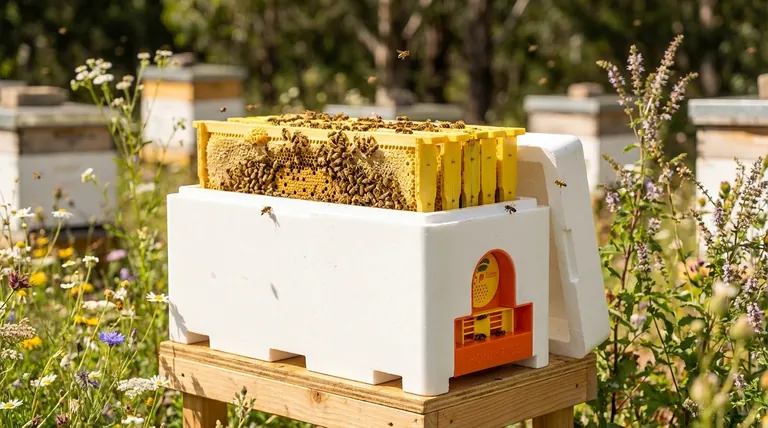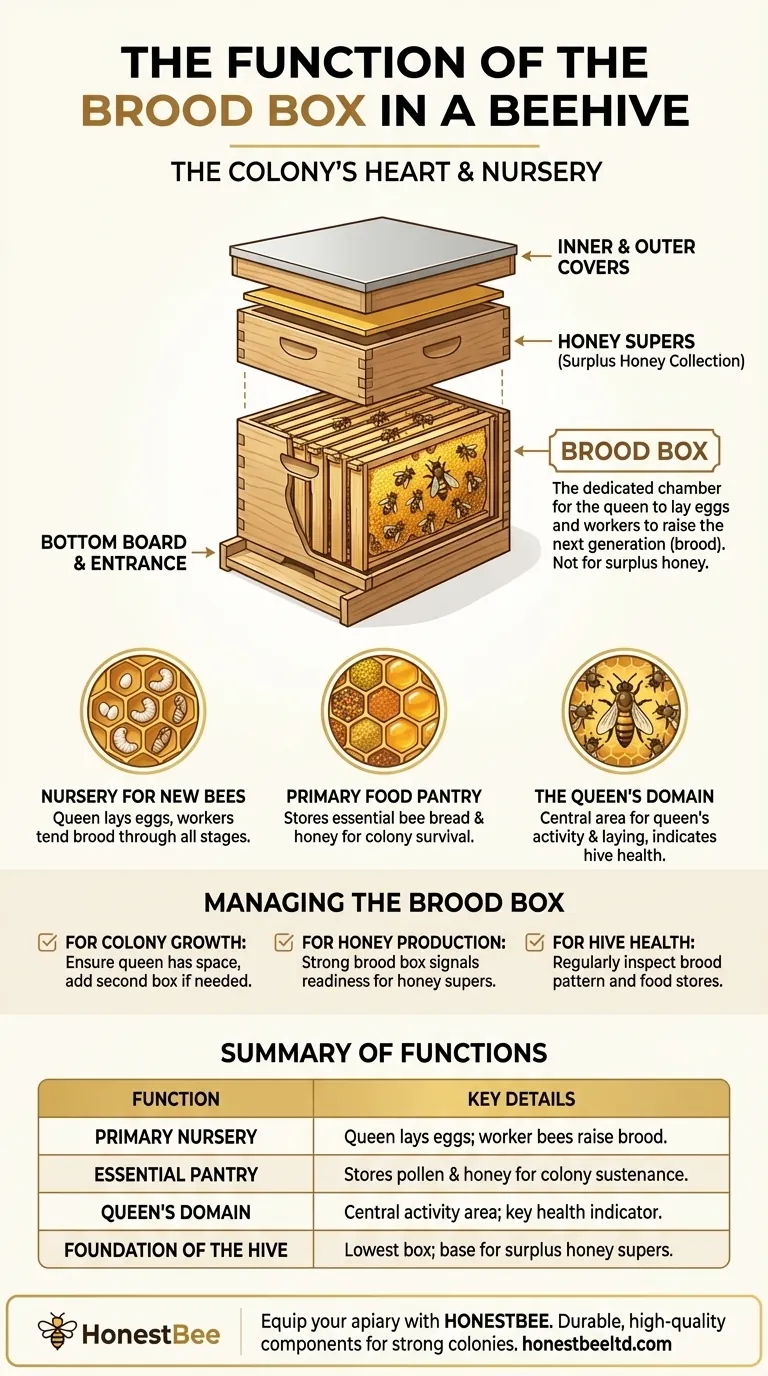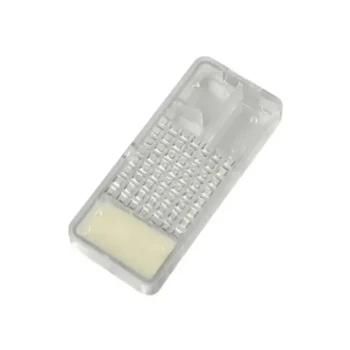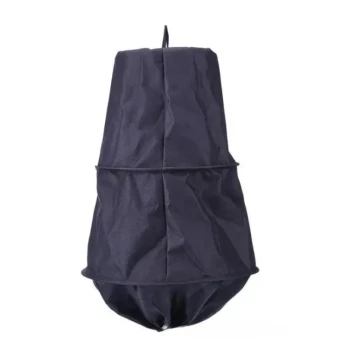At its core, the brood box is the heart and nursery of the beehive. It is the dedicated chamber where the queen bee lays her eggs and where worker bees raise the next generation of bees, known as brood. Bees also store the essential pollen and honey within this box to feed themselves and their developing young.
The function of the brood box is to serve as the colony's central living quarters and reproductive engine. It is not for surplus honey storage, but for the fundamental purpose of raising brood and sustaining the hive's population year-round.

The Brood Box: The Colony's Foundation
The entire life cycle and social structure of the hive revolve around the activities within the brood box. Understanding its distinct functions is the first step to understanding the colony itself.
The Nursery for New Bees
The primary purpose of the brood box is to house the colony's "brood," which includes eggs, larvae, and pupae.
The queen bee works almost exclusively within this chamber, laying thousands of eggs that worker bees then tend to through every stage of development. This is where the colony's population is born and replenished.
The Primary Food Pantry
Worker bees store resources critical for the colony's immediate survival inside the brood box.
Frames in this box contain not just brood but also "bee bread" (packed pollen) and honey. This food is specifically for feeding the developing larvae and the adult bees, especially during periods of poor weather or winter.
The Queen's Domain
The brood box is the queen's domain. Her health, productivity, and laying pattern can be assessed by carefully inspecting the frames within this box.
A healthy, continuous pattern of eggs and brood is the single best indicator of a vital colony and a well-functioning queen.
How the Brood Box Fits in the Hive
A modern beehive is a modular system, and the brood box serves as the foundational component upon which the rest of the hive is built.
Its Position in the Stack
The brood box is the lowest box in the hive stack that the bees inhabit. It sits directly on top of the bottom board, which provides insulation from the ground and contains the hive entrance.
The Critical Difference from Honey Supers
Above the brood box, beekeepers add additional boxes called honey supers. Their function is fundamentally different.
While the brood box is for the bees' own use, honey supers are added to collect surplus honey. This is the honey a beekeeper can harvest without harming the colony's ability to sustain itself.
Protection from the Elements
The entire stack, including the brood box and any supers, is protected by an inner cover and an outer cover.
These covers provide insulation from heat and cold, offer ventilation, and prevent the bees from sealing the top of the hive shut.
Managing the Brood Box for a Healthy Hive
Effectively managing a beehive means focusing your attention on the health and status of the brood box. It tells you everything you need to know about the colony's current state and future needs.
- If your primary focus is colony growth: Ensure the queen has ample space to lay by managing frames, and be prepared to add a second brood box if the population becomes too large for a single one.
- If your primary focus is honey production: A thriving, populous brood box is the signal that the colony is strong enough to support adding honey supers for surplus nectar collection.
- If your primary focus is hive health and survival: Regularly inspect the brood box for a solid brood pattern and ensure it contains sufficient food stores to sustain the colony, especially ahead of winter.
Understanding the brood box's function as the hive's nursery and engine is the key to supporting a healthy, productive, and sustainable bee colony.
Summary Table:
| Function | Key Details |
|---|---|
| Primary Nursery | Queen lays eggs; worker bees raise brood (eggs, larvae, pupae). |
| Essential Pantry | Stores pollen and honey for feeding the brood and sustaining the colony. |
| Queen's Domain | The central area for the queen's activity and a key indicator of colony health. |
| Foundation of the Hive | The lowest box in the stack, upon which honey supers are added for surplus honey. |
Equip your apiary for success with HONESTBEE. A thriving brood box is the foundation of every productive hive, and having the right equipment is essential. As a trusted wholesale supplier to commercial apiaries and beekeeping equipment distributors, we provide the durable, high-quality brood boxes and hive components you need to support strong, healthy colonies. Let's discuss how our products can help you maximize colony growth and honey production. Contact our team today to request a quote or learn more about our wholesale offerings.
Visual Guide

Related Products
- Portable Bee Mating Hive Boxes Mini Mating Nucs 8 Frames for Queen Rearing
- Professional Insulated Plastic Bee Hives
- In-Hive Dual Compartment Frame Bee Feeder for Targeted Colony Nutrition
- Langstroth Honey Bee Box Hive Boxes for Different Depths
- Twin Queen Styrofoam Honey Bee Nucs Mating and Breeding Box
People Also Ask
- How are nuc boxes used in queen rearing? The Essential Tool for Reliable Queen Mating
- Why is it important to monitor bees after relocation? Essential Guide for Apiary Success
- What is a baby nuc or mating nuc used for? A Guide to Efficient Queen Rearing
- Why is painting mating boxes beneficial? Boost Queen Rearing Success & Equipment Lifespan
- What are the benefits of using small nucs for raising and mating queens? Maximize Queen Production Efficiency



















